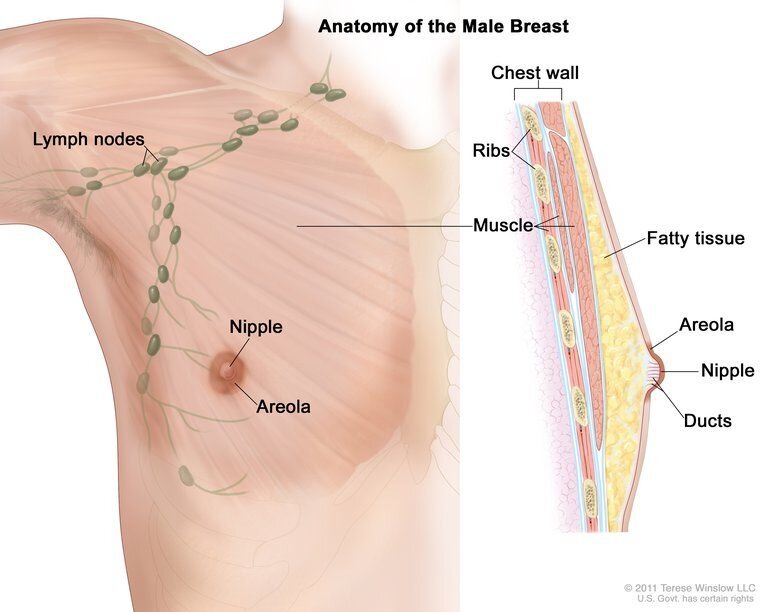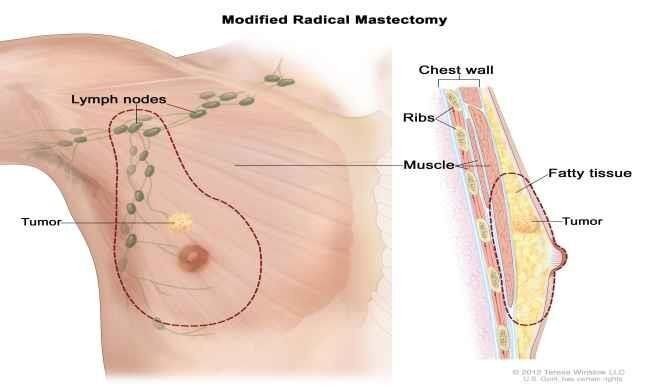Currently, many people still think that breast cancer is a disease that only occurs in women. However, although rare, men can also get breast cancer.
In the United States, an estimated 1 in 100 breast cancer cases are diagnosed in men, with about 350 male patients diagnosed with the disease each year. In Australia, in 2022, this number is about 200 patients. Understanding symptoms and risk factors will help men make appropriate adjustments to prevent and limit disease progression.
.
POPULAR TYPES OF MALE BREAST CANCER
- Invasive ductal carcinoma: Cancer cells start in the ducts then invade beyond the ducts into other parts of the breast tissue. Invasive cancer cells can also invade or metastasize to other parts of the body.
.
Invasive lobular carcinoma: Cancer cells start in the lobules of the breast, then spread to surrounding breast tissue. Invasive cancer cells can also invade or metastasize to other parts of the body.
.
Ductal carcinoma in situ (DCIS) is a breast disease that can lead to invasive breast cancer. The cancer cells are only in the lining of the ducts and have not spread to other tissues in the breast.
.

.
COMMON SYMPTOMS OF BREAST CANCER IN MEN
- There is a tumor in the breast or the area around the breast such as under the armpit.
- Breast redness or peeling skin.
- Breast skin is sunken or wrinkled.
- Discharge from nipples.
- Inverted nipples or pain around the nipples.
.
These symptoms can also occur in conditions other than cancer. If you have any symptoms or changes, see your doctor for timely examination and diagnosis.
.

.
THE DANGER ELEMENTS
There are several factors that can increase the risk of breast cancer in men. However, having risk factors does not mean you will get breast cancer.
.
Age: The risk of breast cancer increases with age. Most cases of breast cancer are detected after age 50.
- Gene mutations: Genetic changes (mutations) in some genes such as BRCA1 and BRCA2 increase the risk of breast cancer.
- Family history of breast cancer: The risk of breast cancer in men is higher if a family member has had breast cancer.
- Treatment with radiotherapy: Men who have had radiotherapy to the chest area have a high risk of breast cancer.
Hormone treatment: Drugs containing the hormone estrogen used to treat prostate cancer increase the risk of breast cancer in men.
- Klinefelter syndrome: Klinefelter syndrome is a term for a rare genetic disorder in men where the patient is born with an extra X chromosome. This can lead to the body producing more estrogen. higher, leading to higher estrogen levels and lower androgen levels (hormones that help develop and maintain male sex characteristics).
Some conditions that affect the testicles: Trauma, swelling, or surgery to remove the testicles can increase the risk of breast cancer.
Liver disease: Cirrhosis can reduce androgen levels and increase estrogen levels in men, increasing the risk of breast cancer.
- Obesity: Elderly men who are obese or overweight have a higher risk of breast cancer than men of normal weight.
All men can reduce their risk by maintaining a healthy weight, leading a healthy lifestyle, and exercising regularly.
.
Source:
https://www.cdc.gov/cancer/breast/basic_info/index.htm
https://www.cancer.org.au/cancer-information/types-of-cancer/breast-cancer-in-men
https://www.cancerresearchuk.org/about-cancer/breast-cancer/types/male-breast-cancer
https://www.cancer.gov/types/breast/patient/male-breast-treatment-pdq





